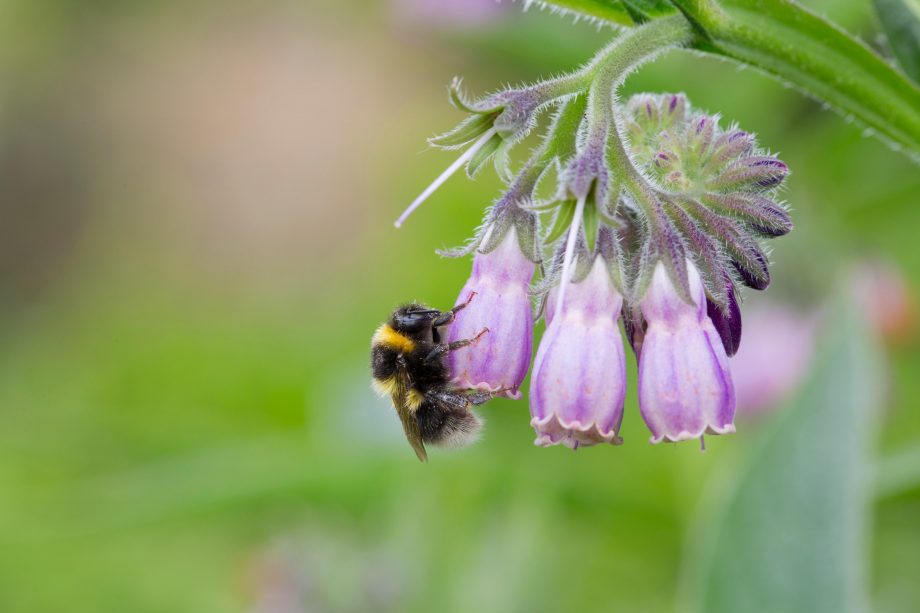Mark Diacono on Martin Crawford, the man who has inspired him for decades.
Twenty years ago, an acquaintance said I might be interested in ‘this chap who’s planting like a forest, only it’s food’. I scoured the internet, I tracked him down, and persuaded him to let me visit. The subsequent day I spent with Martin Crawford caused a complete turn in my kitchen-garden mindset.
This, he explained, was a forest garden. Rather than follow the traditional kitchen-garden approach with annual vegetables planted in lines and grown almost in two-dimensional format, a forest garden is designed to mimic a natural woodland, planned and planted in integrated tiers, starting with the canopy, beneath which smaller trees, shrubs and herbaceous layers flourished, together with ground-cover and subterranean harvests, each linked by climbers.
The emphasis on perennial plants brings resilience and a long productive season: after year one, the perennials’ deep root system means they are less susceptible to drought or floods than annuals and many become productive early in the year.
Designing in plants that enrich the soil and feed the productive plants is integral to the approach: mineral accumulators, such as comfrey, root deeply, drawing up nutrients and other trace elements from low in the soil profile to become available in the topsoil when their leaves are cut; nitrogen fixers such as clover and autumn olive (Elaeagnus umbellata) take nitrogen from the air and make it available to neighbouring plants through their root system or leaf fall. This maintains fertility naturally. Many also draw in pollinators and other beneficial insects to help maintain an ecological balance.
View this post on Instagram
With all this talk of productivity, let’s not forget that forest-garden design has many of the sensibilities of traditional ornamental-garden design — planting for visual appeal; seasonal interest; sensitivity to aspect, soil type and so on — always maximising flavour, diversity, wildlife value and incorporating plants that enhance the health of the soil.
Although we were walking around a new project — largely young plants a few years at most in the ground — I knew this was how I wanted to grow and I planted a quarter-acre forest garden at my old smallholding, Otter Farm.
It included walnuts among the canopy trees, Asian pears and medlars beneath, Sichuan pepper and jostaberries part of the shrub layer, rhubarb and artichokes among the herbaceous plants, with Moroccan mint and Nepalese raspberries providing groundcover, yacón, oca and mashua giving me underground harvests, and climbers such as kiwi and akebia. It took time and effort initially. Establishing the groundcover — by using thick card to mulch out any weeds and grass if needed before planting—is key, but get that right and you have a clean base on which to build.
Woodland is the natural vegetation of much of the country, which means that, once established, forest gardens are in harmony with Nature’s trajectory and achieve a natural balance with limited maintenance. The combination of groundcover and perennial planting does away with the familiar kitchen-garden cycle of sowing, hoeing and watering that takes up so much of the gardener’s time.
These principles apply readily to a smaller space, too. I’ve designed urban forest gardens at the domestic scale and I am using the same principles in my own garden. The key is to omit the canopy layer that might otherwise dominate and steal light and plant trees on dwarfing rootstocks or train them as fans, cordons, espaliers and pleaches to allow a wide range of fruit and nuts to be grown, as well as maximising the amount of light reaching the lower layers.
Martin’s forest garden now has the look and feel of a diverse woodland, with paths and clearings punctuating the whole. There is an air of Willy Wonka’s chocolate factory about it: in summer, you can reach up for a pear or apricot; in autumn, Sichuan pepper and walnuts hang from the trees; early spring brings sweet cicely and Solomon’s seal shoots. Flavours abound and, even at his two-acre scale, ongoing work is minimal.
Martin runs courses (www.agroforestry.co.uk), holds open days at his south Devon location and his books on forest gardening are the required tomes. If you’d like to see a young forest garden finding its feet, pay a visit to RHS Rosemoor, Devon, where the brilliant team is developing a forest garden that acts as a transition between the more formal areas and the glorious woodland setting in which Rosemoor sits.
Mark Diacono grows edibles, both usual and unusual, at Otter Farm in Devon (www.otterfarm.co.uk). His latest book is From Scratch: Ferment (Quadrille, £12.99)

Comfrey: What you need to know about the plant that ‘looks like borage a couple of gins into a long weekend’
Mark Diacono on the beautiful and untamed joy of comfrey.

Mark Diacono: How to grow your own hazelnuts (and why you’ll find it rather easy)
Our resident grow-your-own expert Mark Diacono gives his tips on the surprisingly easy hazelnut.

Everything you need to know to grow your own cucumbers
Food writer Mark Diacono shares his tips on how to grow cucumbers and three of his favourite varieties to try.

How to grow mint, the ultimate plant for the incurably incompetent
Mark Diacono explains why mint is for even the incurably incompetent horticultural enthusiast.

The ‘underground treasures’ which are like a gardener’s game of chicken — hold your nerve, and the pay-off is spectacular
Growing plants specifically to harvest their roots takes faith, patience and nerve, explains Mark Diacono, but it's well worth the

Jerusalem Artichokes: Everything you need to know about growing and eating them
Point one: they're not artichokes, and they're not from Jerusalem, says Mark Diacono.

The ultimate guide to planting your own orchard: ‘Getting it right is easy; sadly, so is getting it wrong’
Mark Diacono has planted dozens of orchards — he shares his wisdom on how to go about it.





